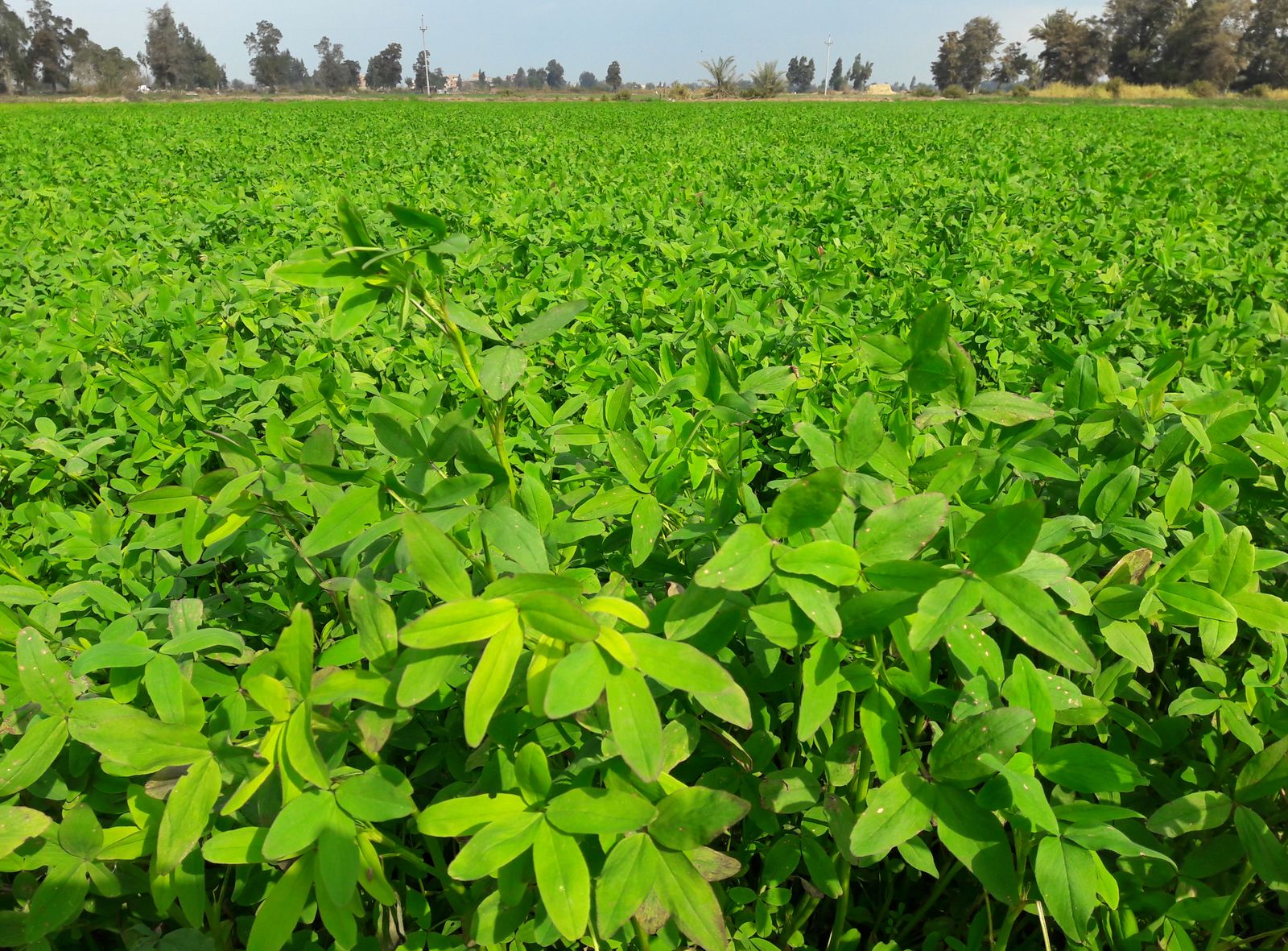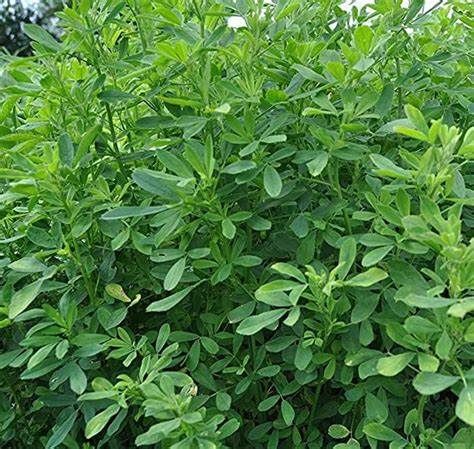Cotton farming has been a cornerstone of agriculture for centuries, providing raw materials for one ...
Berseem (Trifolium alexandrinum) is a valuable fodder crop widely used in animal husbandry due to its high nutritional content. It is a winter crop cultivated in many parts of India, providing nutritious green fodder for livestock. This article provides a comprehensive guide to cultivating berseem, covering essential steps from soil preparation to harvesting.
बरसीम (Trifolium alexandrinum) एक महत्वपूर्ण चारे की फसल है, जिसे विशेष रूप से पशुपालन में उपयोग किया जाता है। इसके पौधे में पोषक तत्वों की अधिकता होती है जो पशुओं के लिए बहुत फायदेमंद होते हैं। बरसीम की खेती सर्दियों के मौसम में की जाती है और इसकी खेती भारत के कई हिस्सों में लोकप्रिय है। आइए जानते हैं, बरसीम की खेती कैसे की जा सकती है:
जलवायु: बरसीम की खेती के लिए ठंडी जलवायु उपयुक्त होती है। इसके लिए तापमान 15-25°C के बीच सबसे अच्छा होता है।
मिट्टी: हल्की से मध्यम उपजाऊ मिट्टी, जिसमें जल निकासी की अच्छी व्यवस्था हो, बरसीम के लिए अनुकूल मानी जाती है। इसकी खेती के लिए पीएच मान 6.5 से 7.5 के बीच होना चाहिए।

बीज का चयन: उच्च गुणवत्ता वाले बरसीम के बीज का उपयोग करें, ताकि पौधों की वृद्धि अच्छी हो।
बुवाई का समय: बरसीम की बुवाई का सबसे अच्छा समय अक्टूबर से नवंबर तक होता है।
बुवाई की विधि: बरसीम की बुवाई छिड़काव या कतारों में की जा सकती है। कतारों में बुवाई करने पर पौधों की देखभाल आसान होती है।

एक हेक्टेयर खेत के लिए 20-25 किलोग्राम बीज की आवश्यकता होती है। यदि कतारों में बुवाई कर रहे हैं तो कतार से कतार की दूरी 25-30 सेमी रखनी चाहिए।
बुवाई से पहले खेत में 10-12 टन गोबर की खाद मिलाएं। इसके अलावा, 20-25 किलोग्राम नाइट्रोजन प्रति हेक्टेयर की दर से देना चाहिए, जिससे पौधे की वृद्धि अच्छी होती है।
बरसीम के बीज अंकुरित होने के लिए नमी की आवश्यकता होती है, इसलिए बुवाई के तुरंत बाद हल्की सिंचाई करें।बरसीम की फसल को हर 20-25 दिन में सिंचाई की आवश्यकता होती है। ध्यान दें कि खेत में जलभराव न हो, इससे पौधों को नुकसान हो सकता है।
यह भी पढ़ें: जौ की खेती | सरसों की खेती
बरसीम की पहली कटाई बुवाई के लगभग 60-65 दिन बाद की जा सकती है। इसके बाद, हर 25-30 दिन के अंतराल पर कटाई की जाती है। एक सीजन में 5-6 बार कटाई की जा सकती है। प्रति कटाई 10-15 टन प्रति हेक्टेयर हरा चारा प्राप्त होता है।

एक हेक्टेयर क्षेत्र में बरसीम से 60-80 टन तक हरा चारा प्राप्त किया जा सकता है। इसे पशुओं को ताजा खिलाया जा सकता है या साइलो में स्टोर कर चारे के रूप में भी इस्तेमाल किया जा सकता है।
बरसीम की खेती से किसानों को उच्च गुणवत्ता वाला चारा मिलता है, जो पशुओं की सेहत और दूध उत्पादन में वृद्धि करता है। उचित जलवायु, सही बुवाई विधि और उर्वरक प्रबंधन से बरसीम की खेती में अच्छे परिणाम मिल सकते हैं।
Climate: Berseem grows best in a cool climate with temperatures between 15-25°C, making it ideal for winter cultivation.
Soil: Light to medium, well-drained soils with a pH level between 6.5 to 7.5 are ideal for berseem. Ensure that the soil is rich in organic matter for optimal growth.
Plow the field thoroughly, making the soil loose and crumbly. Plow the field 2-3 times, followed by leveling with a roller to smoothen the soil. For better growth, incorporate organic manure or compost into the soil before the last plowing. This enriches the soil with essential nutrients.
Seed Selection: Choose high-quality seeds to ensure healthy plant growth.
Sowing Time: The ideal sowing period is from October to November for optimum yield.
Sowing Method: Berseem can be sown by broadcasting or in rows. Row sowing is recommended for easy management and growth.
For one hectare, use 20-25 kg of seeds. In row planting, maintain a spacing of 25-30 cm between rows to allow adequate growth and air circulation.
Before sowing, apply 10-12 tons of well-rotted manure or compost to enrich the soil. Additionally, apply 20-25 kg of nitrogen per hectare to promote healthy growth.Irrigation
Berseem seeds require moisture to germinate, so provide a light irrigation immediately after sowing. Subsequent irrigation should be provided every 20-25 days, depending on moisture levels. Avoid waterlogging, as it can harm the crop’s roots.
Diseases: Berseem can be affected by diseases like leaf spot and stem rot. Use organic fungicides periodically to control these.
Pests: Aphids and pod borers can infest berseem. Organic insecticides or pest management practices can help protect the crop.
The first cut can be done 60-65 days after sowing. After the first harvest, subsequent cuts can be made every 25-30 days. A single season can yield 5-6 cuts, providing 10-15 tons of green fodder per hectare per cut.
Berseem typically produces 60-80 tons of green fodder per hectare in a season.It can be fed fresh to livestock or stored as silage for later use.
Berseem cultivation provides high-quality fodder essential for livestock health and milk production. With proper climate conditions, planting techniques, and nutrient management, farmers can achieve a high yield, ensuring a steady supply of nutritious fodder for their animals.
0
0
Cotton farming has been a cornerstone of agriculture for centuries, providing raw materials for one ...
Bajra, also known as pearl millet, is a highly resilient and nutritious crop widely cultivated in ar ...
Wheat is one of the most widely cultivated and consumed grains globally. It serves as a staple food ...
Spinach , commonly known as Palak in India, is a nutritious leafy green vegetable rich in vitamins a ...
Maithi, commonly known as fenugreek (Trigonella foenum-graecum), is a versatile herb used both as a ...
Radish is one of the most popular root vegetables grown across the world. It is valued for its crunc ...
Cabbage is a versatile and widely consumed vegetable known for its rich nutritional value and numero ...
Carrot is a root vegetable that is widely grown around the world due to its high nutritional value a ...
Mung dal, also known as green gram, is a highly nutritious legume that is widely cultivated across A ...
Mustard farming is widely practiced across most states in India, mainly grown as a Rabi crop. Mustar ...
In today’s article, we will discuss precision farming, a new agricultural practice that uses techn ...
Rabi crops are an integral part of Indian agriculture, usually sown during the winter season. These ...
Barley farming is an important Rabi crop that is not only beneficial for health but also economicall ...
Sugarcane farming is one of the most important cash crops in India. It serves as a primary raw mater ...
The use of machines in mustard farming has become a game-changer for farmers, improving efficiency, ...
Maize, also known as corn, is a vital cereal crop grown extensively in India. It serves as a staple ...
Sweet potato, known for its rich nutrition and quick-growing nature, is a crop that can offer good p ...